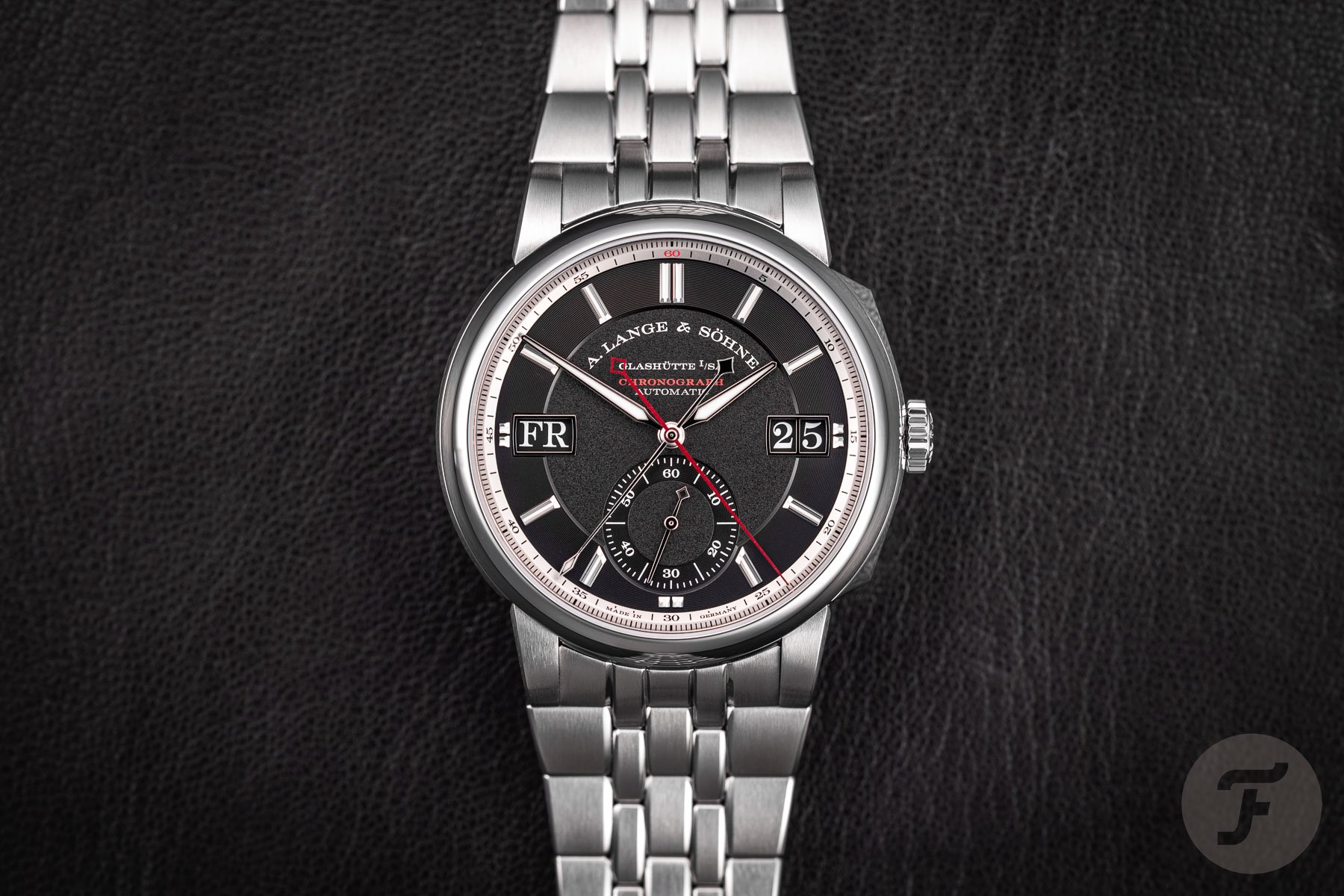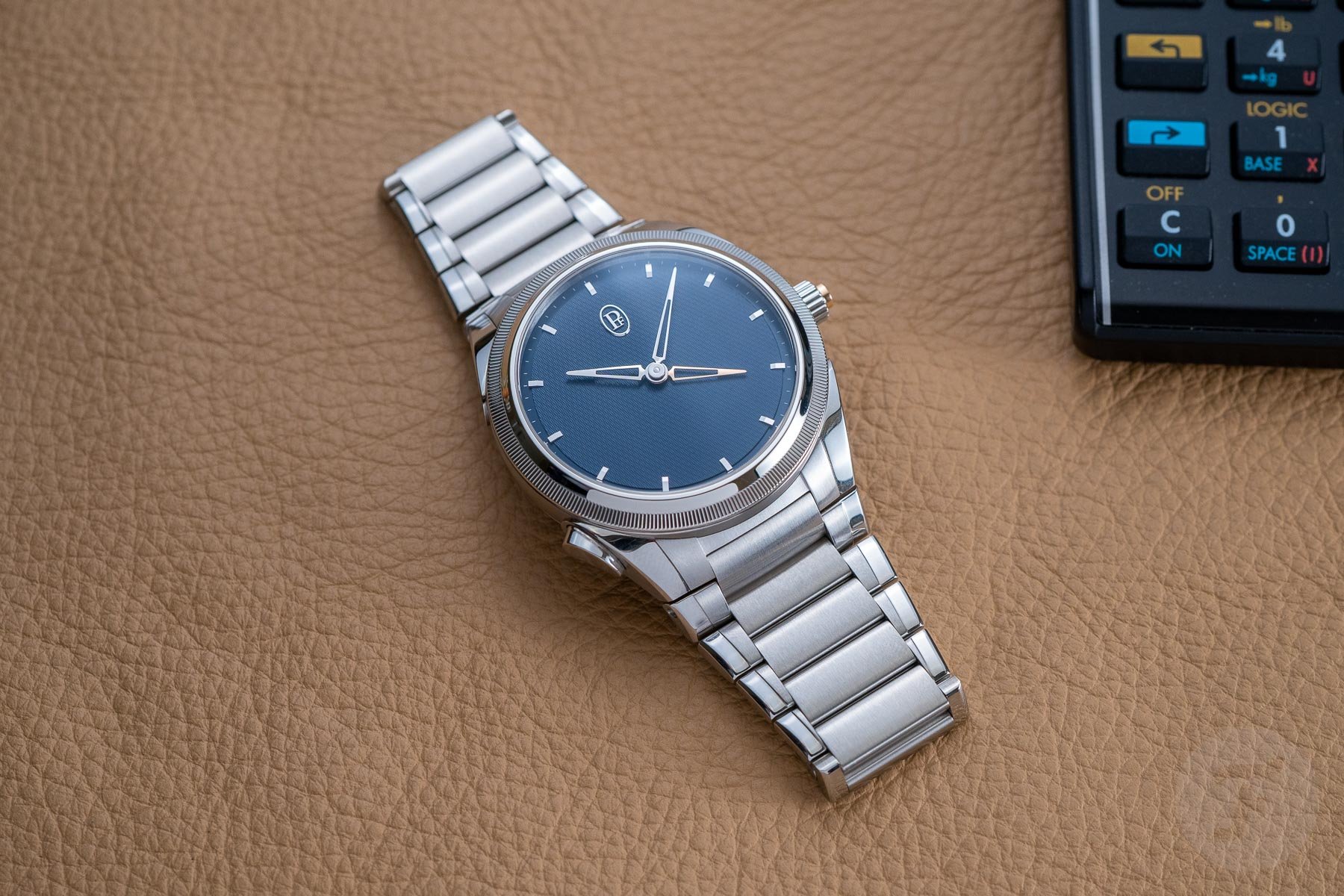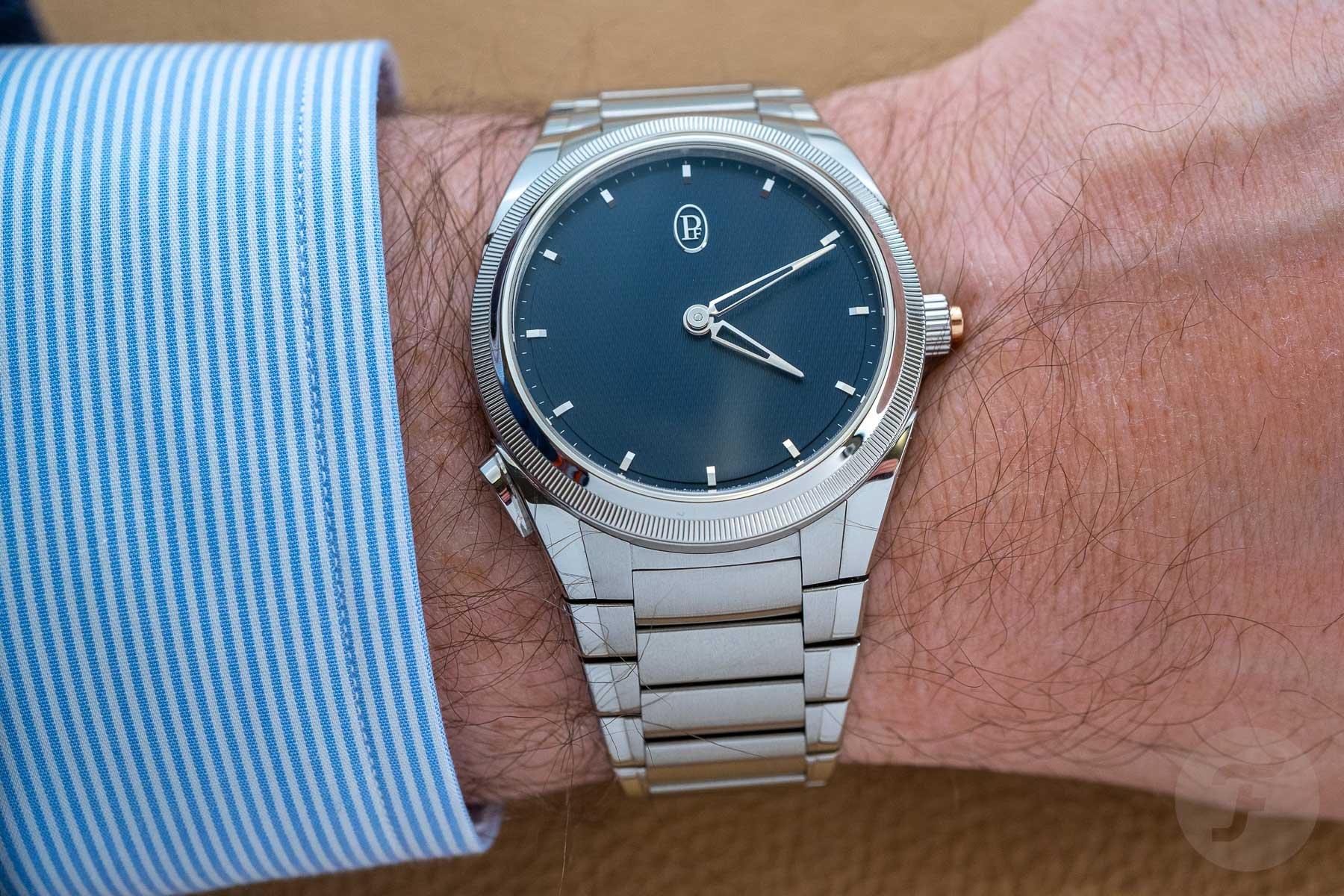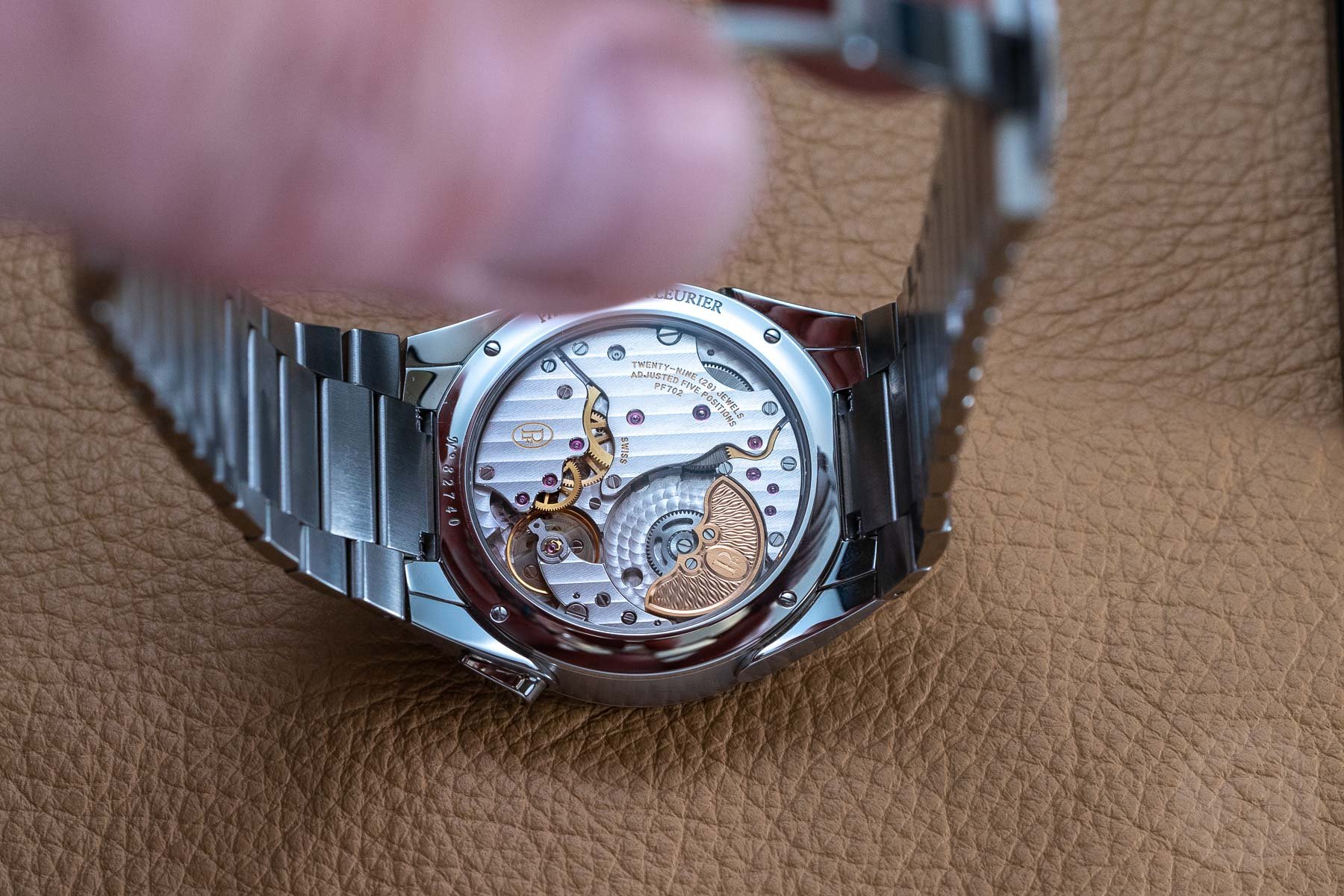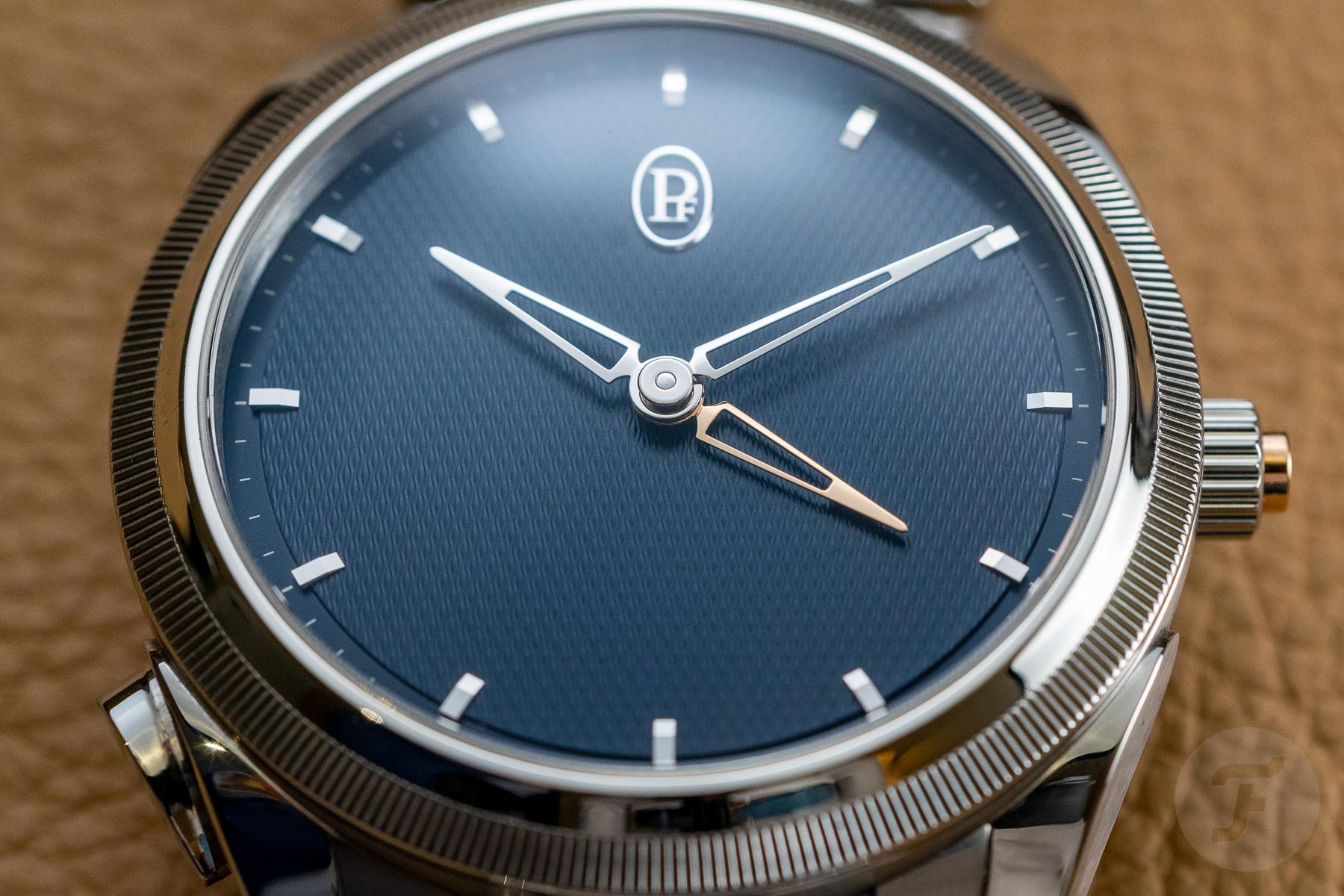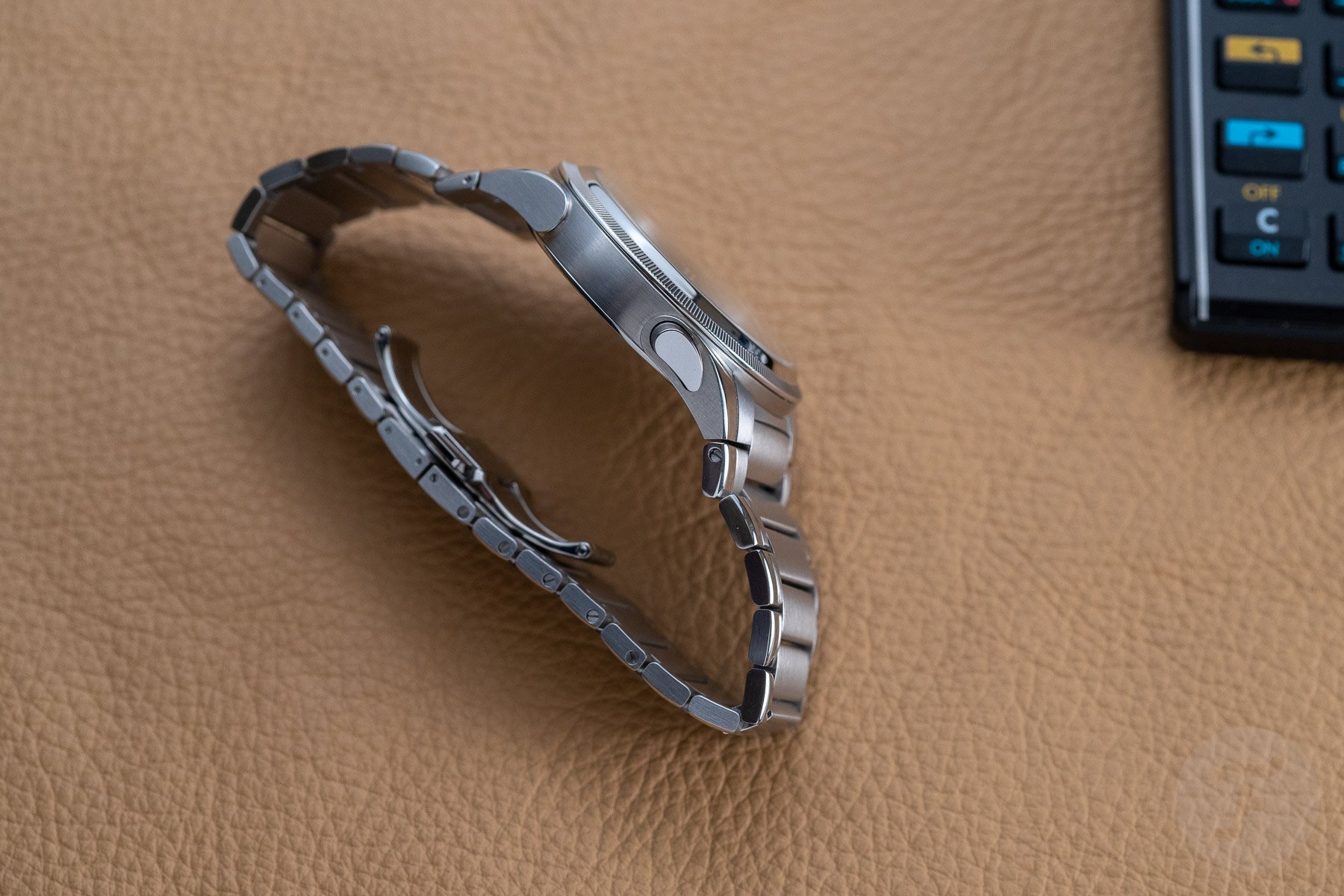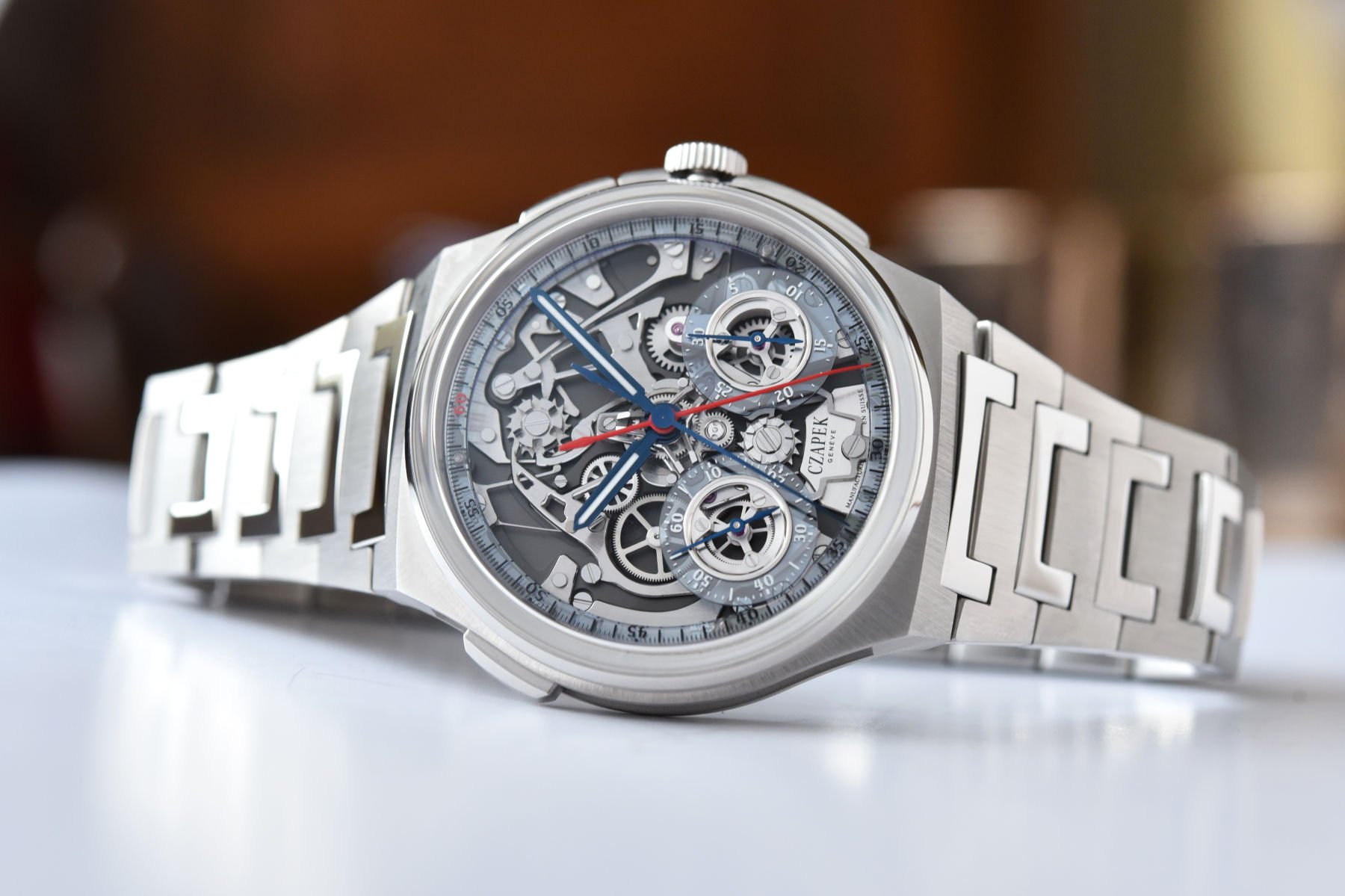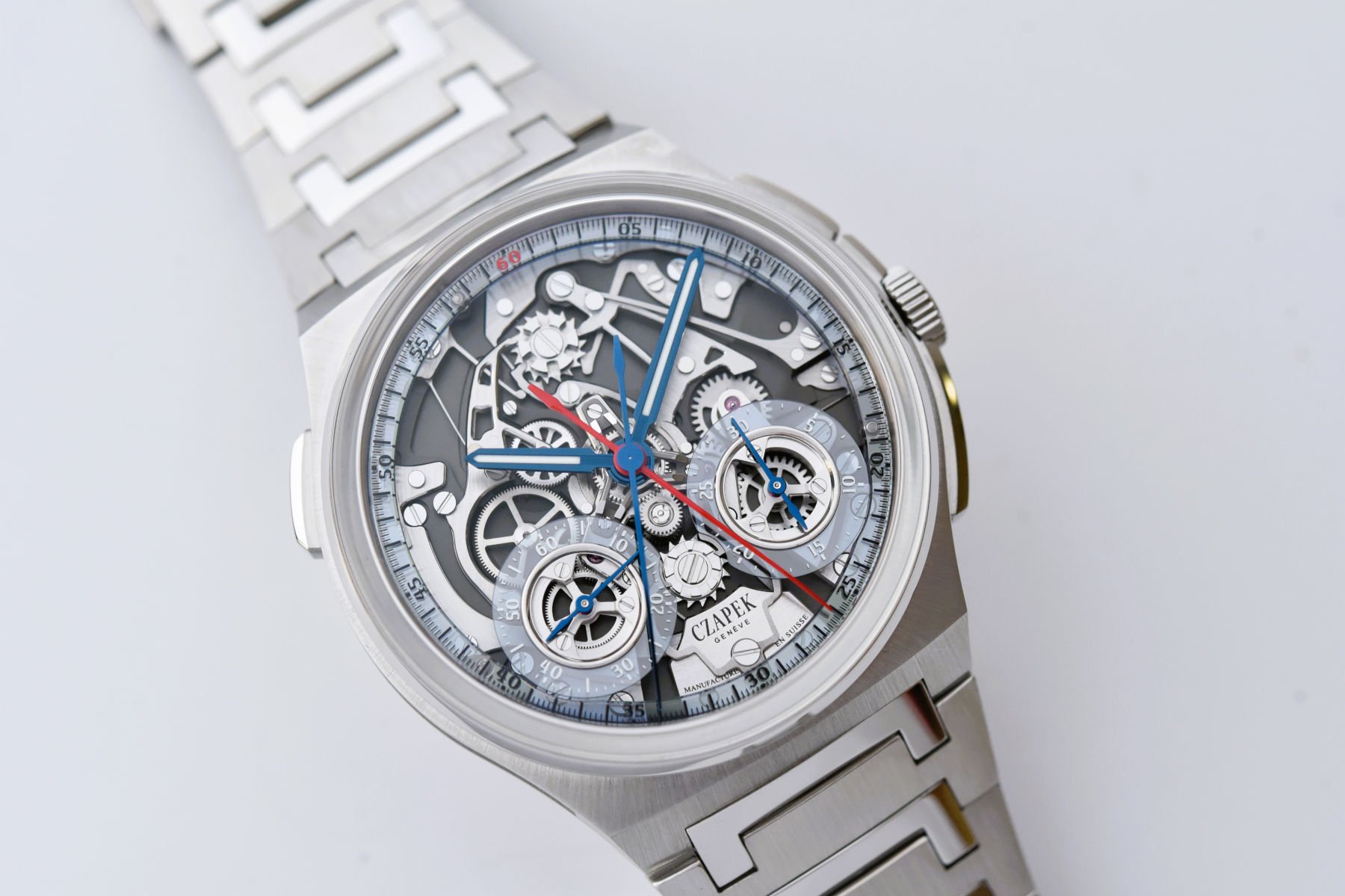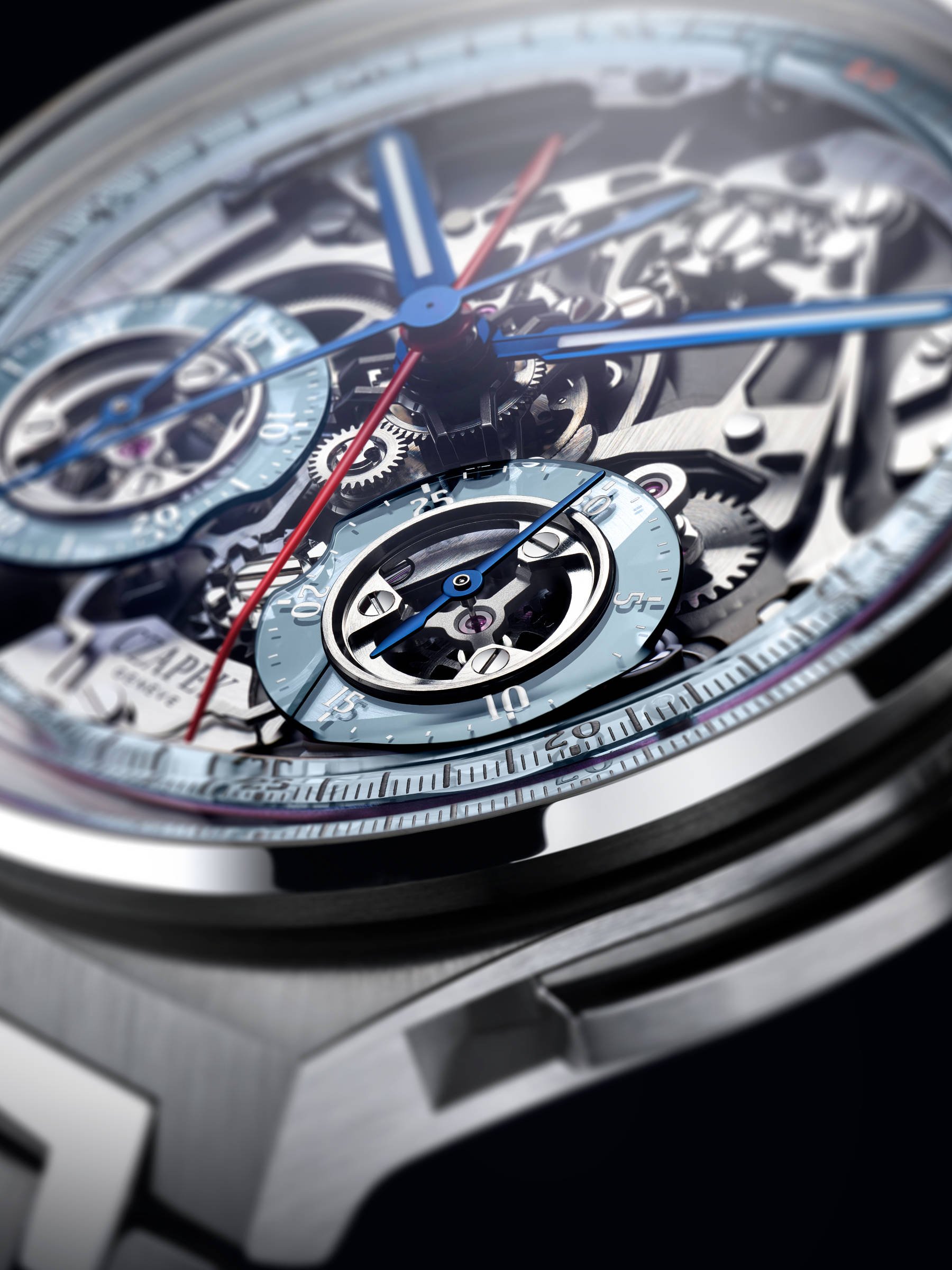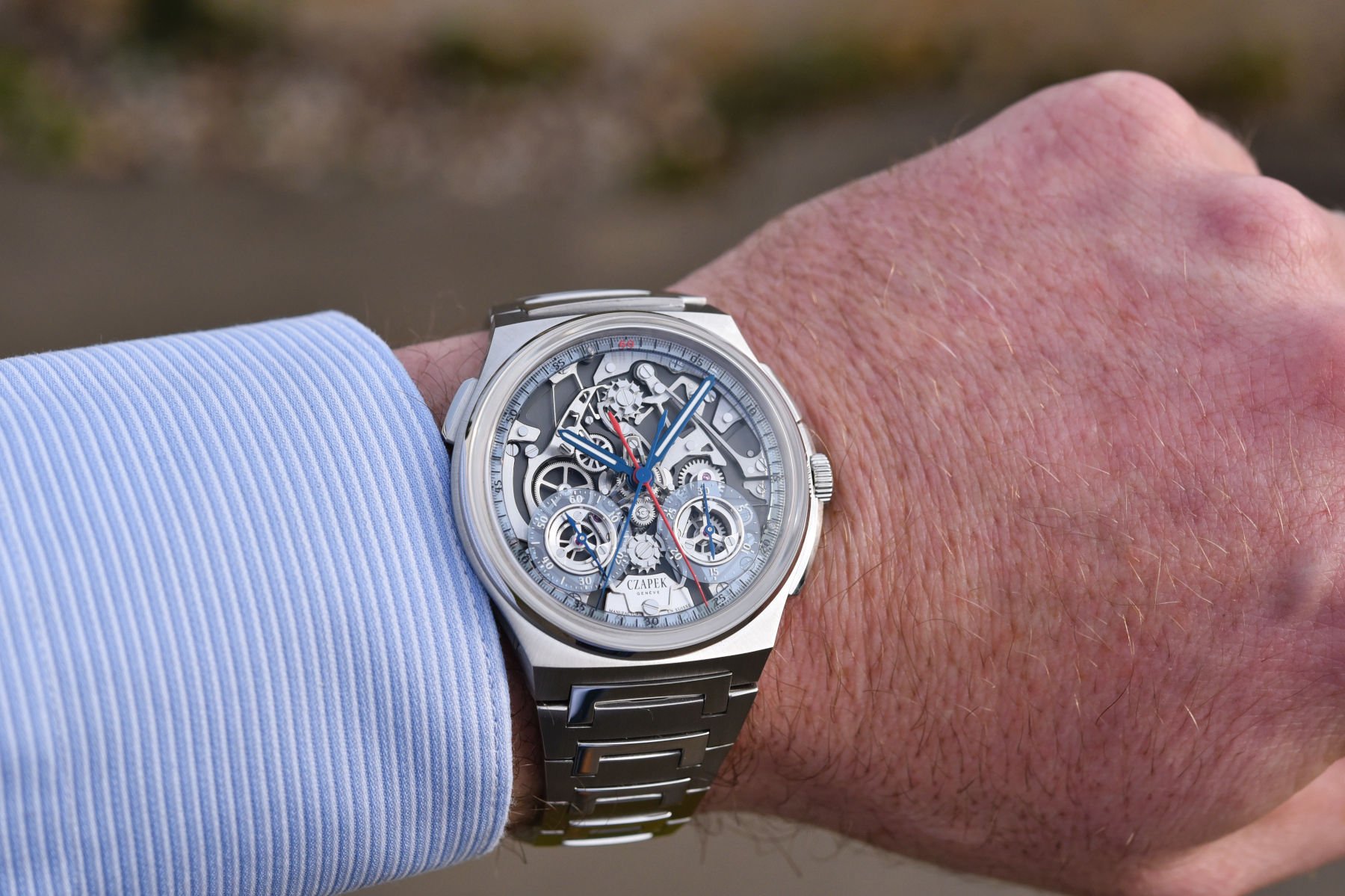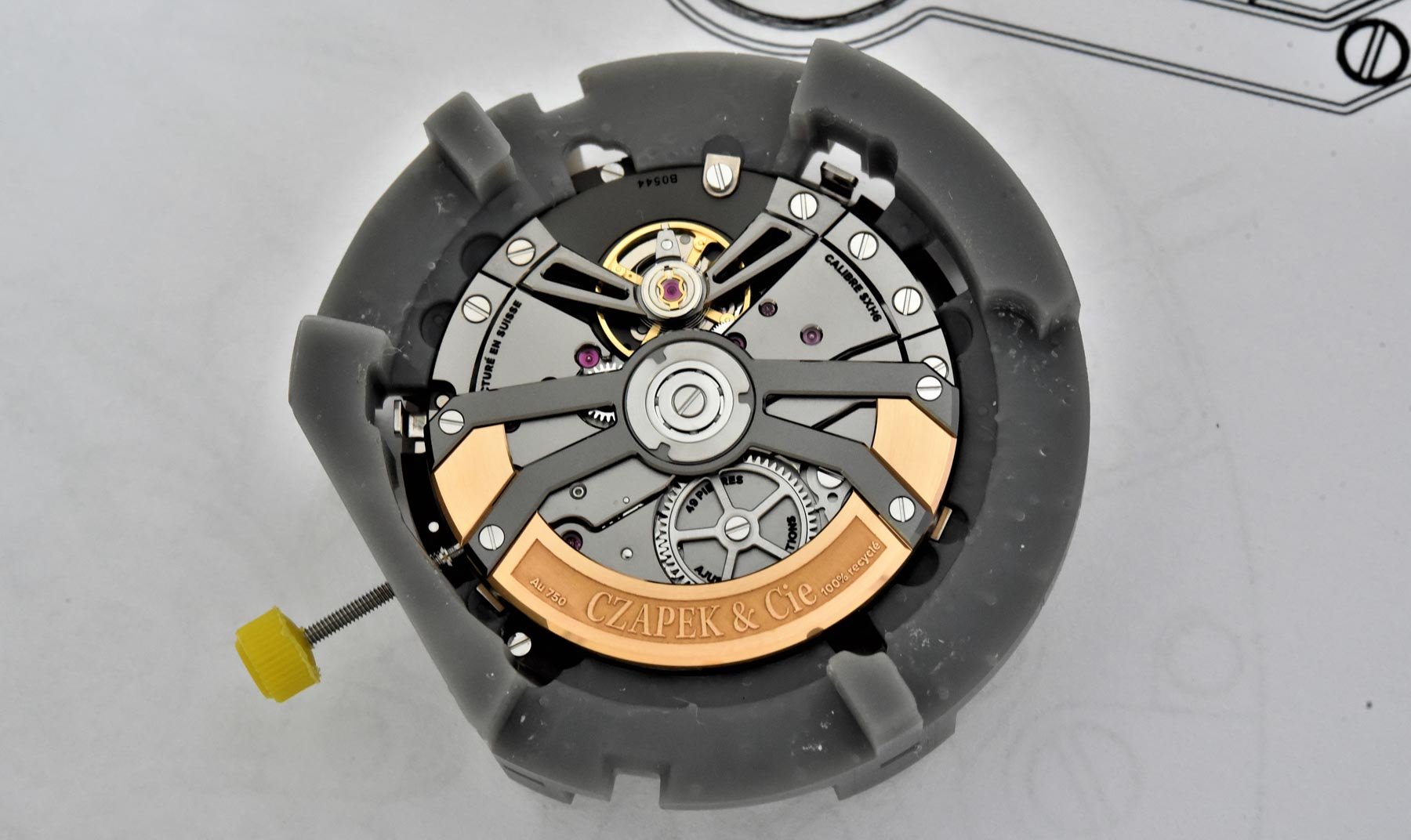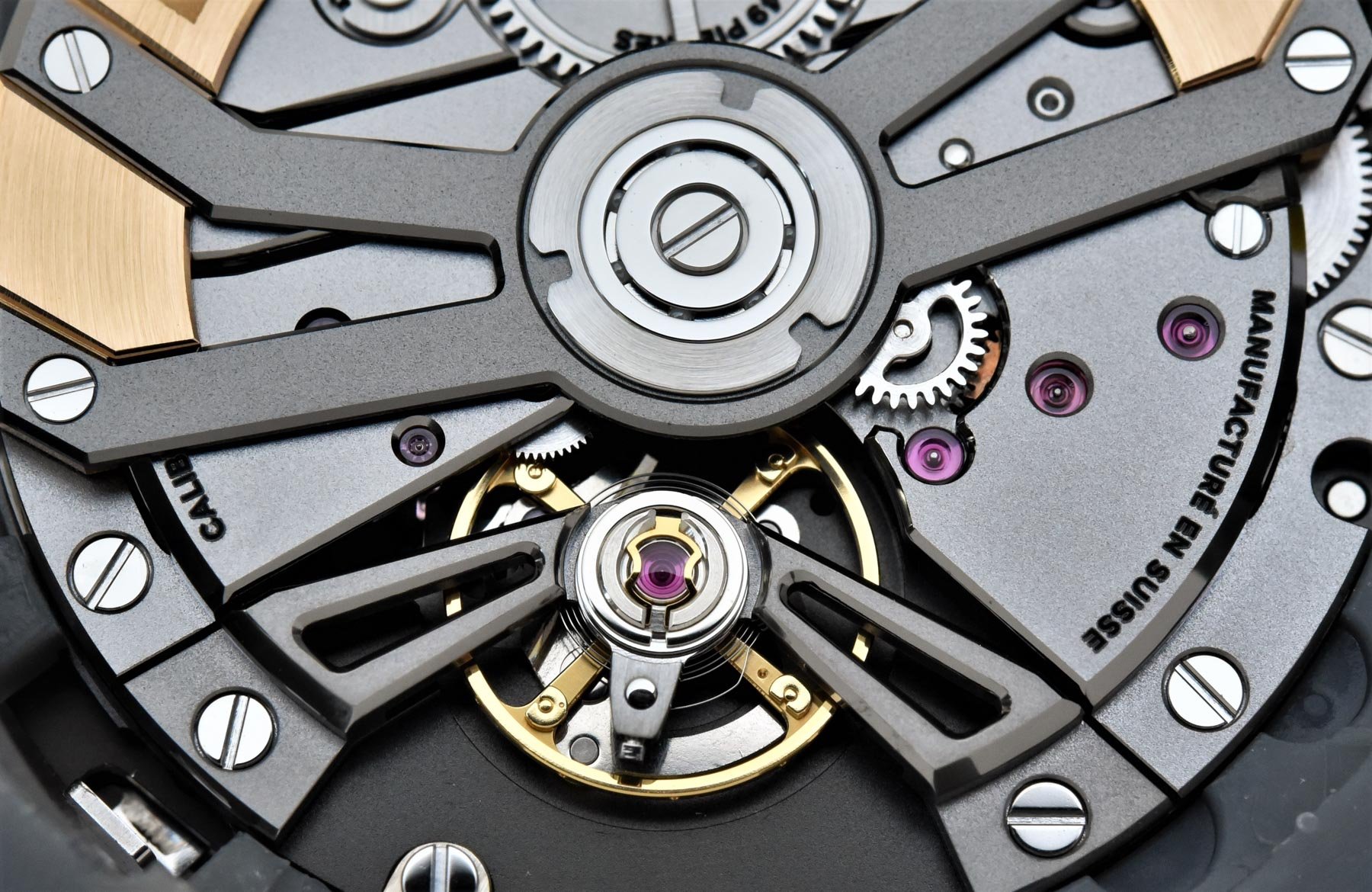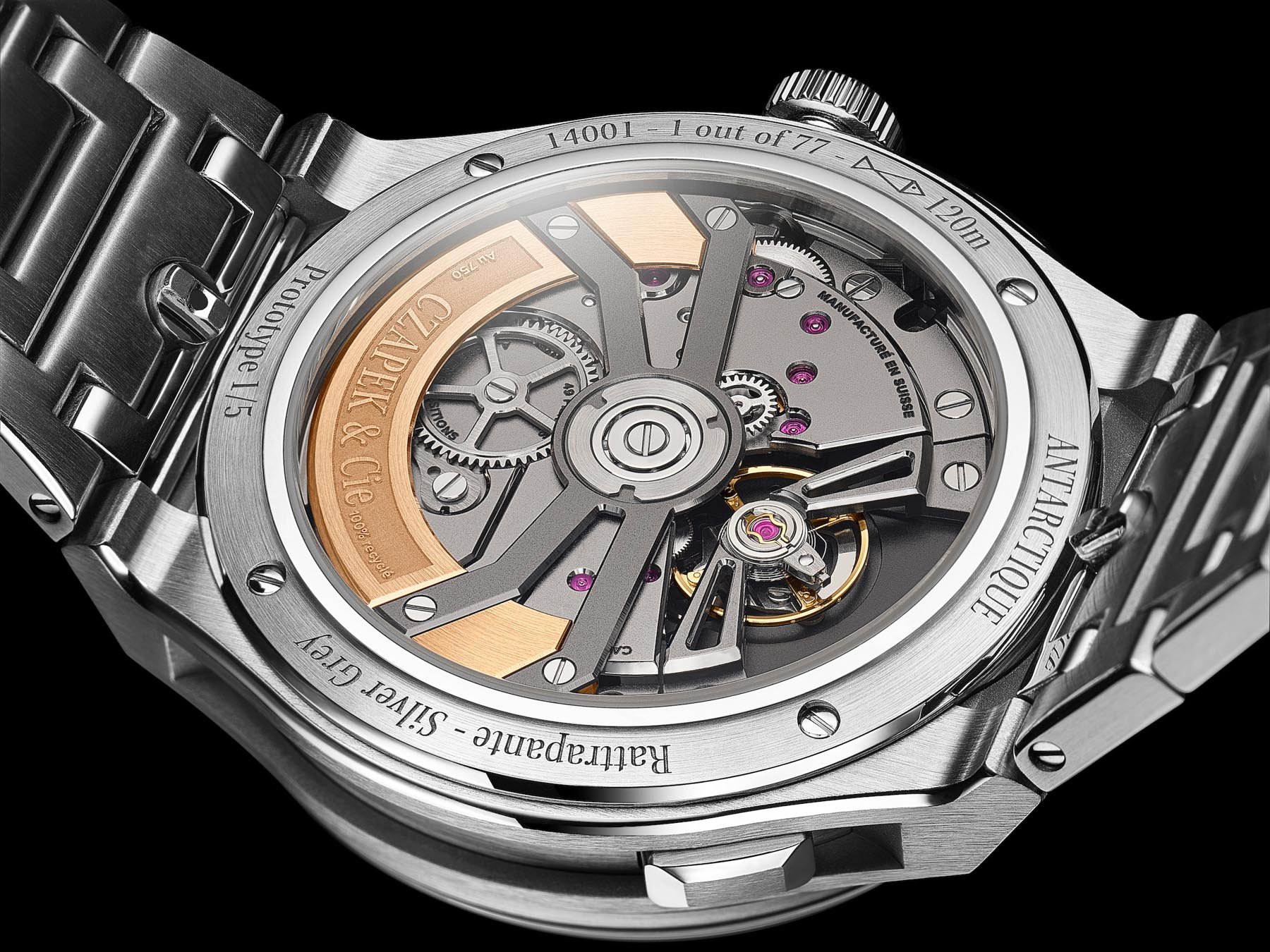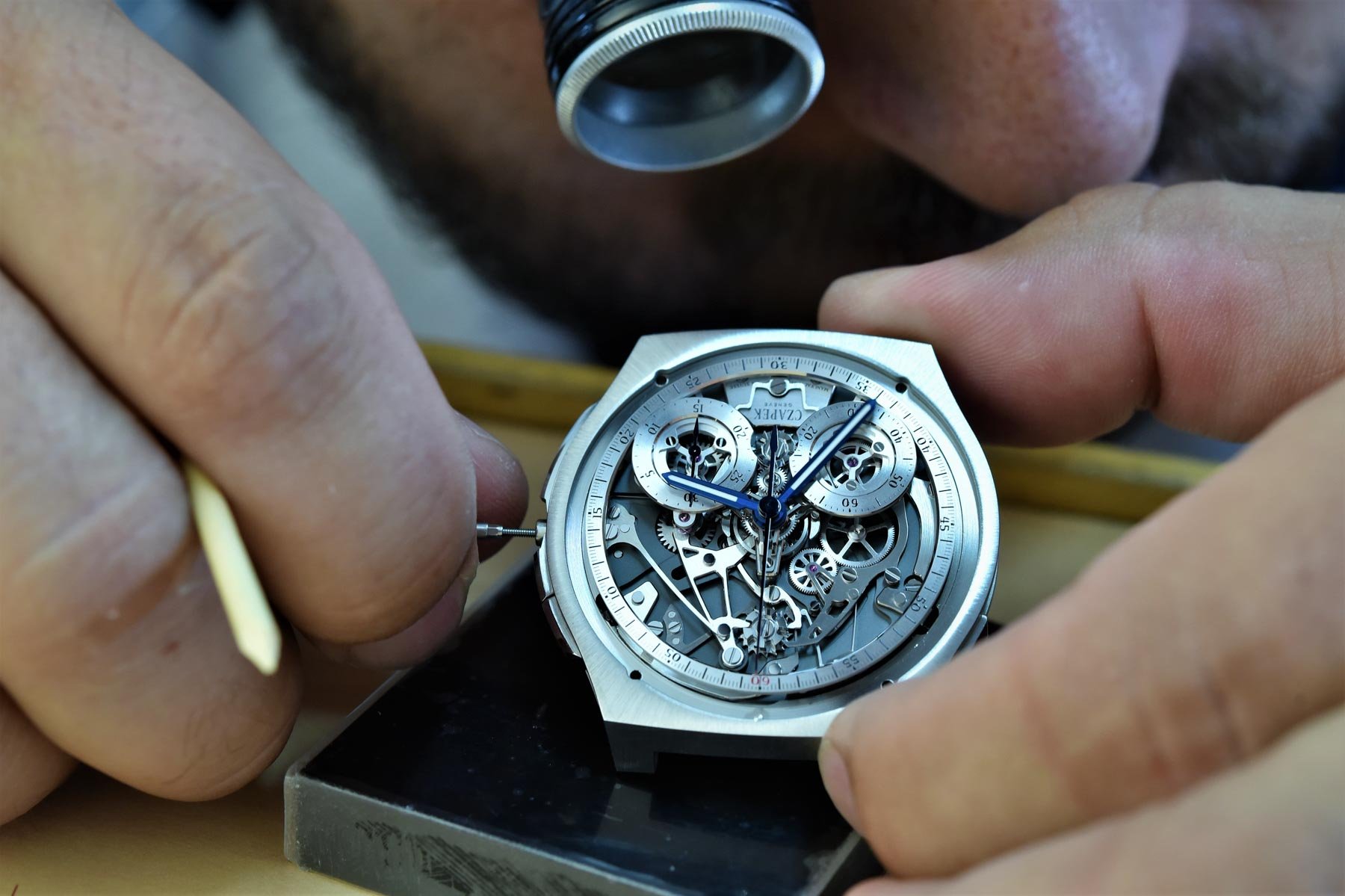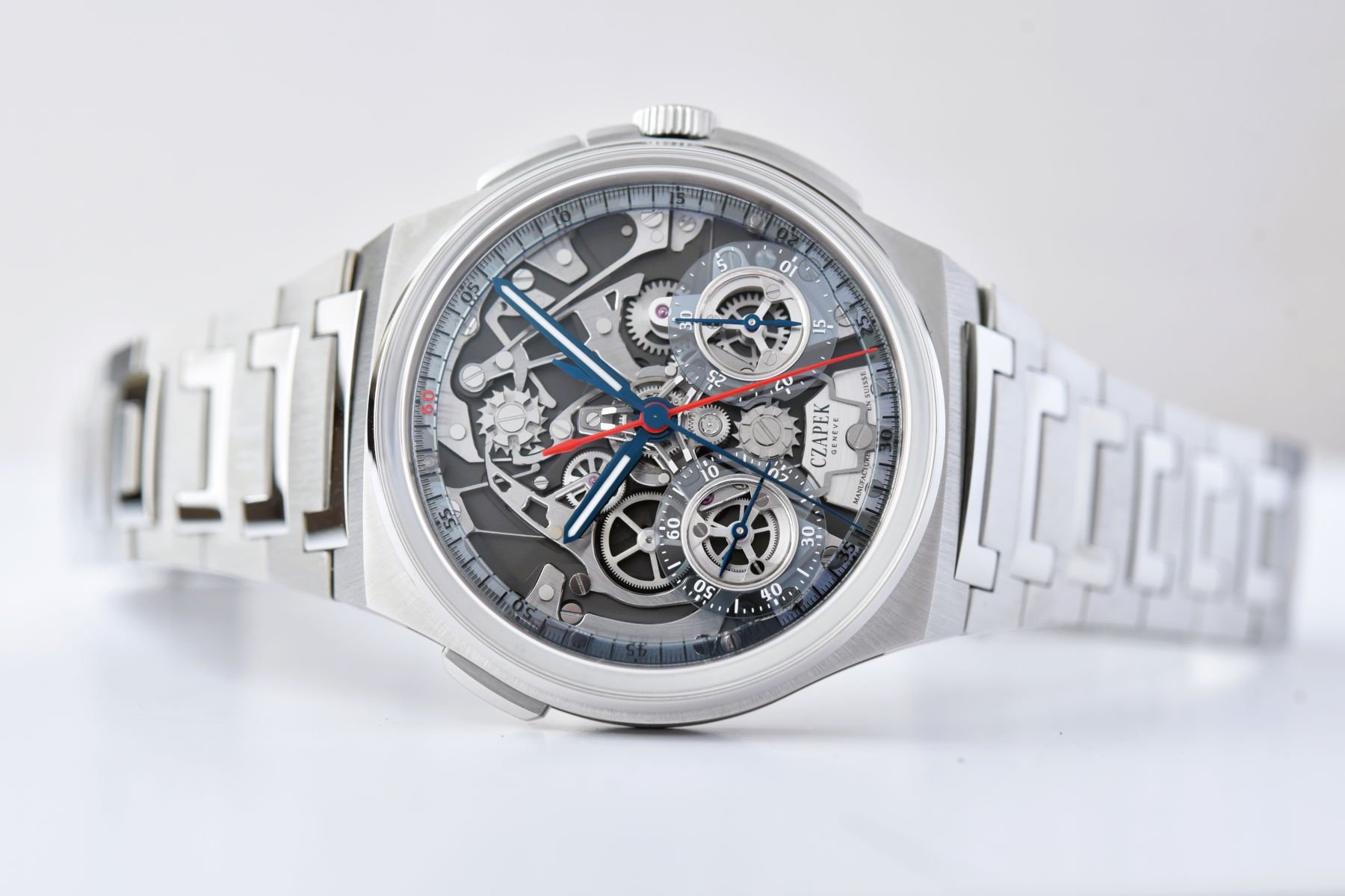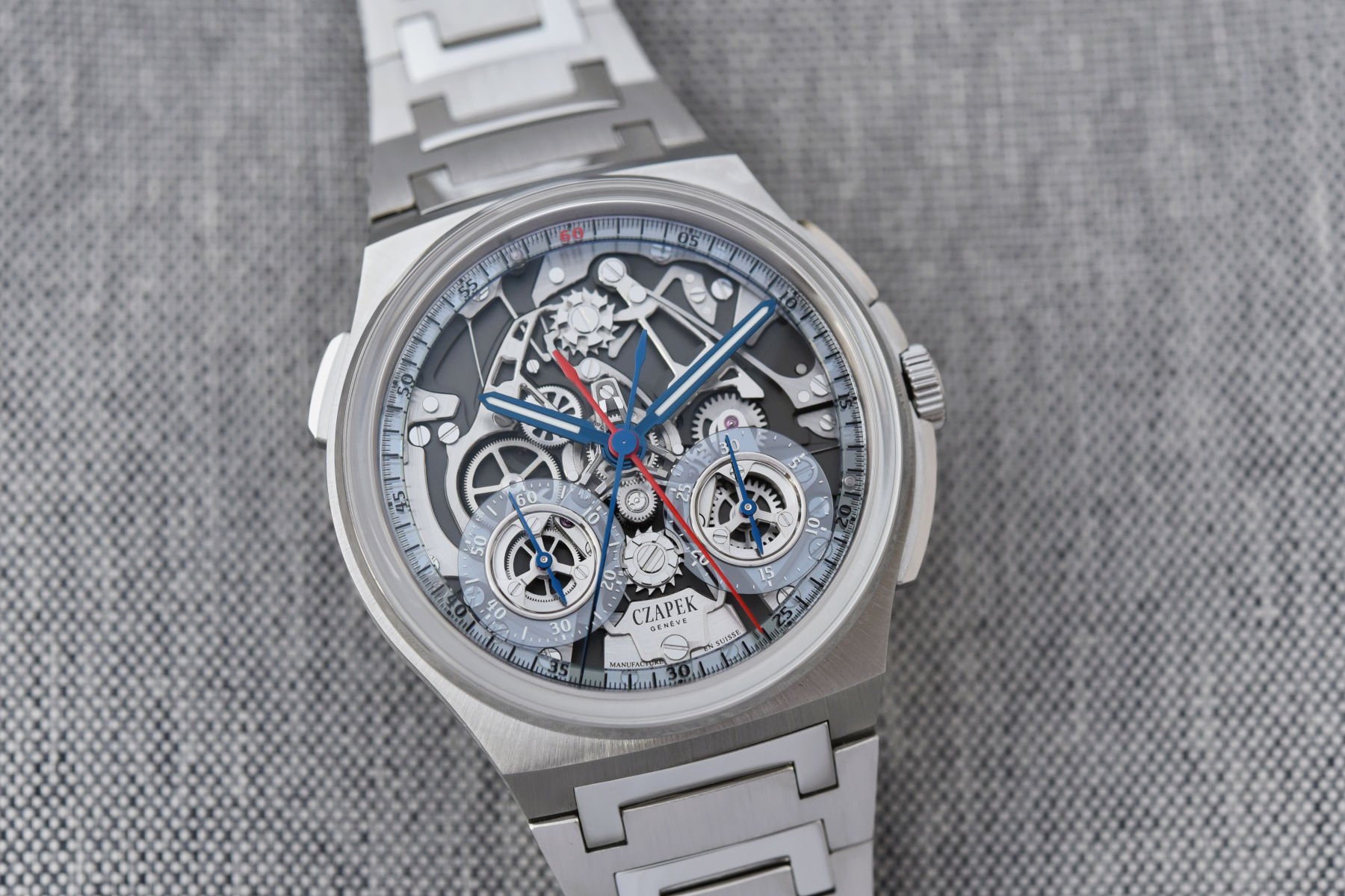Sunday Morning Showdown: Parmigiani Fleurier Tonda PF GMT Rattrapante Vs. Czapek Antarctique Rattrapante Ice Blue
Winter is approaching in the Northern Hemisphere, so spend a few minutes in bed and warm up with another Sunday Morning Showdown. While the opinions might get heated, the watches are icy cool. In the case of the Czapek Antarctique Rattrapante, the ice-blue flourishes may send shivers down your spine. At the same time, the split-second snap may warm the cockles of your heart. In the other corner, the tailored contour of Parmigiani’s Tonda PF GMT Rattrapante offers supreme comfort, while the stark dial reflects a wintery landscape. Which watch will win? You decide! So read on to get our thoughts, cast your vote, and let us know why in the comments.
Now is the time to accept that sports watches with integrated bracelets (or integrated-look bracelets) are here to stay. With many brands throwing down on the concept and the apparent popularity surrounding these watches, what we thought was a trend has cemented itself as a bona fide category. So much so, in fact, that the two brands we’re covering today have both pivoted their catalogs around the same core philosophy. For example, the rebirth of Parmigiani in 2021 centered around the Tonda PF Micro-Rotor. Similarly, the Antarctique from Czapek became a runaway success in 2020, and the hype is still strong. Our editors are taking evolutions from both model ranges that increase the complexity of this showdown. Today, the Parmigiani Fleurier Tonda PF GMT Rattrapante faces off against the Czapek Antarctique Rattrapante Ice Blue. But first, let’s reflect on last week.
Last week’s showdown
In the previous battle, the A. Lange & Söhne Odysseus Chronograph took on the Grönefeld 1941 Grönograaf. While the Dutch-made Grönefeld had the homeland advantage, the German Lange won with 54% of the votes. This demonstrates the Odysseus Chronograph’s ability to share the original model’s core design while only adding two additional hands for the chronograph function. Of course, the day- and date-adjusting crown guards are also repurposed as chronograph pushers. Yet, visually, the silhouette remains the same across all Odysseus models. It’s a clever way of maintaining consistency within the collection, and you, the Fratelli, agree that the Odysseus is the winner.
Now, back to today’s topic, with Ben repping the Parmiagiani and Jorg backing the Czapek.
Ben: Parmigiani Fleurier Tonda PF GMT Rattrapante
The Tonda PF Micro-Rotor is the impetus behind the revitalization of Parmigiani Fleurier. It’s the slimmest, most comfortable, and purest execution of the Tonda PF design, and it provides the perfect platform for expansion through various complications. My favorite offshoot model is the GMT Rattrapante. A rattrapante function is typically associated with the chronograph complication. You only have to view Jorg’s pick to understand this. If you boil it down to its essentials, the rattrapante superimposes hands on each other until the wearer needs to split time. In a chronograph, this is for comparing events that start simultaneously but have different endpoints. However, applying the concept to a GMT allows the watch to display either one or two time zones whenever the wearer desires. In this case, the rattrapante function hides the additional hour hand.
Regardless of where it is positioned, the pusher in the crown instantly returns the rose gold hand to beneath the main hour hand. Using the pusher at 8 o’clock achieves the same hiding function but only via hourly increments, which is more for adjusting. The advantage of the crown pusher is that the hand returns in one fell swoop. After a long-haul flight, it’s nice to have at least one thing in your travels with some expediency. Of course, having a travel-time watch with a hiding hand is not new — think of the Patek Philippe Aquanaut 5164A. However, the option to hide the hand with one button press is unique to the Parmigiani Tonda PF GMT Rattrapante.
Private appreciation
Applying the rattrapante concept to a complication other than a chronograph opens up doors to further experiments, as we’ve seen with Parmigiani’s Minute Rattrapante. But the caliber PF051, developed by Parmigiani’s in-house Vaucher Manufacture Fleurier department, brings this watch to life. I appreciate this because, of all the watch complications out there, the GMT has proved most helpful during my travels. And that’s not just on a nostalgic or watch-nerdy level. Rather, I find it a valuable tool for transatlantic communication. A glance to check two time zones is all that’s required instead of flicking through pesky smartphone screens. And with the self-winding micro-rotor, you’d never even need to take the watch off to wind it or reset the time during the trip.
Why would you want to? The Tonda PF GMT Rattrapante is drop-dead gorgeous. The sumptuous curves contour to the wrist, and the sparse dial allows the design language to be heard loud and clear. At first, the barren wasteland of the Tonda PF Micro-Rotor’s dial in 2021 didn’t land with me. Over time, though, the message conveyed by the simplicity has come through with a sense of quiet luxury. This is not a term or concept that Parmigiani touts, but I can’t help but feel that it allows greater private appreciation. The brand’s name is not spelled out or emblazoned across the top half of the dial. Instead, only the PF logo designed by Michel Parmigiani occupies the space and is a nod to hallmark stamps. The subtle quilting in the Grain d’Orge guilloché dial is almost imperceptible in Milano blue, but it can be adored up close.
A perfect flow
It’s fitting that last week’s showdown featured the A. Lange & Söhne Odysseus Chronograph. As much as I respect the watch, I still cannot get over the broad shoulders of the lug design. Where the Parmigiani differs is in the flowing lines stemming from the case sides. Another excellent detail is the teardrop-shaped pusher that follows the outline of the lug. Usually, this level of proportionality is reserved for movement decoration, but the Parmigiani Tonda PF GMT Rattrapante incorporates all these details in every aspect for CHF 27,000. Over to Jorg with the Czapek.
Jorg: Czapek Antarctique Rattrapante Ice Blue
Thanks, Ben! And I agree that the Parmigiani Fleurier Tonda PF GMT Rattrapante has some impressive tricks up its sleeve. On top of that, I greatly appreciate the design of the Tonda PF range. It’s an instantly recognizable and original aesthetic that looks like no other watch currently out there. That is quite the achievement in a world full of safe, vintage-inspired designs. On top of that, I was impressed by the idea of using the rattrapante mechanism for a GMT watch. When we had the watch in the Fratello offices, I had a chance to witness it up close. I’ll admit that its handsome looks, wearability, and intuitive operation are all very impressive.
But I also recognize some practical issues that people immediately had with the watch after it was announced. The GMT hand is a 12-hour one, and without a day/night indication, the complication is flawed. Additionally, I prefer a GMT watch to have a date complication since the date at one’s destination can be different than at home. Because of this, I feel that the Tonda PF GMT Rattrapante is more of a brilliant design exercise with a party trick for a stay-at-home time-zone tracker rather than an actual traveler.
A rattrapante chronograph is the way forward
As you are aware if you follow my writing, I am a big fan of GMTs. And I haven’t lost my sympathy for the Tonda PF and the GMT Rattrapante in particular. But if you give me the choice, I’d much rather have a fully functioning GMT complication and use the rattrapante function for a chronograph. That’s where the mechanism truly works best. And what better watch to integrate it into than the Czapek Antarctique? It was my victorious pick during our March Mania contest in 2021. In every round, I explained why I love the Antarctique so much.
The combination of ’70s retro looks with modern design queues is gorgeous. It made the Antarctique Terre Adélie immediately hit home with me when it was first announced. Czapek nailed its take on a modern luxury sports watch with an integrated bracelet on the first try. It has been good to see that the design serves as the perfect canvas for new dial executions without losing its specific Antarctique charm. But how about removing the dial to bring a rattrapante chronograph complication to the front? And as it turns out, the design also lends itself to this super technical tour de force very well.
The magic of the Czapek Antarctique Rattrapante
In 2021, Czapek presented the Antarctique Rattrapante as a 77-piece limited edition. All of those pieces sold out in seconds, though, so if you blinked twice, you might have missed that release. It was the consumer follow-up to the Antarctique Rattrapante created for Only Watch 2021. But after the initial 77 pieces sold out, Czapek decided to introduce the Antarctique Rattrapante Ice Blue last year. This variation of the version from the year before was limited to 99 pieces and sold for CHF 50,000 before taxes.
As Rob explained, the unique approach to the watch is bringing the rattrapante chronograph mechanism to the dial side. As a result, you lose the traditional dial and can witness the technical wizardry on the front of the watch rather than the back. While this approach is rooted in entertaining the wearer while the watch is on his or her wrist, it does not impact the functionality. Therefore, this is a very capable split-time chronograph that simply looks awesome by showing its inner workings.
Magic made real
Czapek and Chronode developed the unique SHX6 caliber to bring this technical challenge to life. The wizards at Chronode managed to create a slimmed-down rattrapante chronograph movement that fits inside a 42.5mm case. This means that the case size increased slightly in comparison to the standard 40mm model. It still features that stunning integrated bracelet with its combination of brushed and polished links, though it is slightly wider to fit the case.
So, what are you looking at on the dial side? The center of the movement is the so-called “tripod” bridge, which anchors a patented satellite minute train and the patent-pending split-second mechanism. There are column wheels for both the chronograph and the rattrapante mechanism, and there’s a clean-looking horizontal clutch instead of a vertical one. This is because Czapek wanted to “highlight the aesthetics of transmission,” making it more attractive to the wearer. Regarding the sub-dials, the one at 4 o’clock shows the elapsed minutes, and the one at 7 o’clock indicates the running seconds.
Why the Antarctique Rattrapante Ice Blue is the better pick
What stands out immediately is that the colorful handset perfectly catches the eye. The thicker blue hour and minute hands contrast nicely with the movement, and the thinner blue and red chronograph and split-time hands make the rattrapante mechanism visible (although I must say that the red hand does stand out better). The sub-dials also come with blue hands that indicate elapsed minutes and running seconds on transparent discs with white printing. Despite the very technical and busy look, I love how legible the watch is.
But most of all, I adore that the original design of the Antarctique works wonderfully well with this ultra-technical look. While I am not the biggest fan of open-worked dials, when they find their purpose in showing the magic of a mechanism usually found on the back, I am here for it. That unique combination of factors makes the Czapek Antarctique Rattrapante Ice Blue the clear winner in this battle.
Time to vote
Okay, here we are. We’ve presented two innovative rattrapante watches, each with its pros and cons. Which would you rather have? Cast your vote, and let us know your motivations in the comments section below.

